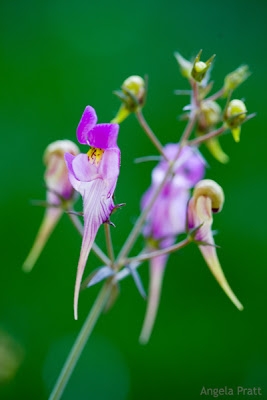by angela@diggingbliss | May 9, 2007 | Uncategorized
“MaMo” addresses the bee problem, AKA Colony Collapse Disorder, in today’s column, with humor, as he often does. So if you like your bitter news with a dose of honey…
Apocalypse Of The Honeybees – How poetically appropriate that the End of Man should come from such a tiny, sweet source Mark Morford, SfGate.com, 05/09/07
What can you do that might help bring back the bees? Yes, it’s entirely possible bee populations will rebound without our help, but there’s no harm in helping now, especially considering scientists are still stumped by the massive die-offs. We’re hearing possible culprits include pesticides, GMOs, cell phones, parasites, mites, fungi, and Ashlee Simpson. In the meantime, think about doing your part:
— Garden organically and practice Integrated Pest Management in your own backyard.
— Buy organic.
— Throw away your cell phone. Kidding! I hope.
— Boycott GMO crops.
— Support organizations working to help the bees.
— Elect environmentally-aware representatives.
— Plant bee-attracting flowers: bee balm, lavender, salvia, zinnia, natives, etc.
— Put up a bee house (see below).
— Hug a scientist. Better yet, donate to your local college’s entomology department.
by angela@diggingbliss | May 4, 2007 | Uncategorized
Sometimes I come somewhat grudgingly back to gardening after a long, wet winter. I’m like a teenager… like my teenager… who keeps pushing the snooze button on a school day. Only it’s not a school bell looming over me, it’s weeds. And drought. And a lawn that could swallow my short-legged dogs if I’m not careful. The fact of the matter is that I’m a lazy slacker of a gardener.
I hate weeding. I hate mulching. I hate feeding. I love planting. I love shopping for plants. I love deadheading, but not major pruning. I love watering with a hose, but hate hooking up drip systems. I really love photographing flowers. Yes, I earned a degree in horticulture from a respectable university, but most days it looks like I attended the Fickle Princess School of Mood Gardening. Not moon gardening, mood gardening.
If I’m in one of those magical moods which, perhaps not coincidentally, coincide with days when I’m well rested and sufficiently caffeinated, I can haul ass in the garden. Other times… ok, most of the time… gardening consists of watching weeds reach flowering stage, watching flowers wilt, and watching my dogs disappear into the lawn. This does bring on feelings of guilt and distress and inadequacy… and I usually respond by performing some hideous but tiny gardening task. Reactively, not proactively, I might add.
But today, I got a rain check. I don’t have to tackle the weeds in my veggie beds. Can’t find the damn hula hoe anyway. It probably hula’d its way over to a more worthy garden. As for me, I’ve got to scuffle off to yoga class. Believe me, I need it. Looming garden chores really stress me out. Namaste. I believe that translates to “Yours in sloth”.
by angela@diggingbliss | May 1, 2007 | Uncategorized
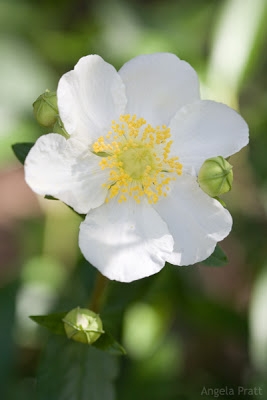
California bush anemone (Carpenteria californica)
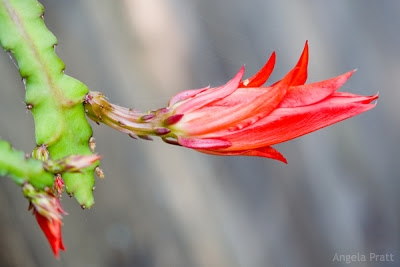
Red orchid cactus
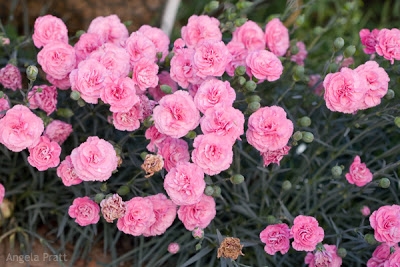
Dianthus hybrid ‘Devon Cottage Rosie Cheeks’… very prolific bloomer
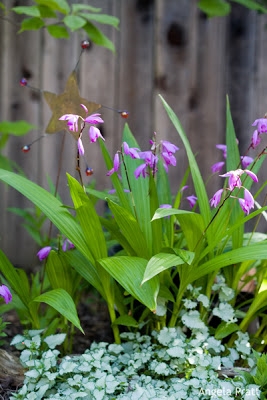
Chinese ground orchids and lamium

Purple Million Bells
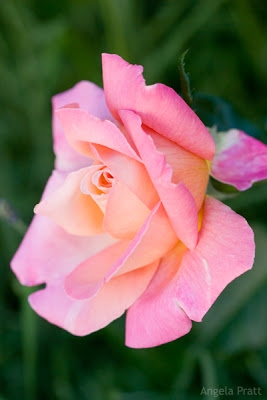
‘Chicago Peace’ rose
by angela@diggingbliss | Apr 30, 2007 | Uncategorized
Linaria triornithophora
“Three Birds Flying”
This was one of my impulse purchases at the Annie’s Annuals booth at the 2007 San Francisco Flower & Garden Show. I stuck it in a pot and it’s just beginning to bloom. Isn’t it amazing? At this stage, it looks more like Two Birds Sleeping and Two Birds About to Fly, but I’ll keep looking for the three flying birds. Maybe it’s like one of those optical illusion drawings that you have to stare at for a long time without blinking, when all-of-a-sudden dolphins appear. Now that I think about it, who cares about three birds flying. I’m going for the hidden dolphins!
by angela@diggingbliss | Apr 24, 2007 | Uncategorized
Have you seen this new offering from
Proven Winners? Hubba hubba!
Osteospermum ‘Sunny Sheila’
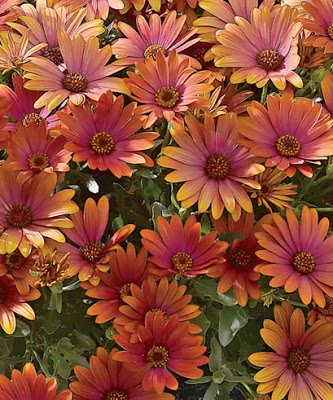
(Photo from Proven Winners website)
I indulged in a single one-gallon specimen this afternoon. Yes, it’s just an African daisy… but what a daisy. Coppery… irridescent… pinky… hints of yellow. It’s catch-your-breath gorgeous, especially when lit by late afternoon sun.
by angela@diggingbliss | Apr 21, 2007 | Uncategorized
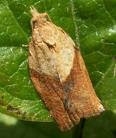
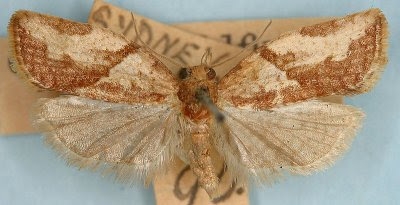
(Photos from the California Department of Food & Agriculture website)
Here’s a snippet from the CDFA profile:
Background
This moth is originally from Australia, and has become established in New Zealand, New Caledonia, Hawaii and the British Isles. Its discovery in California is a new North American record.
Hosts
LBAM has been recorded from over 200 plants in 120 plant genera in 50 families. Some notable trees are apple, pear, peach, apricot, nectarine, citrus, persimmon, cherry, almond, avocado, oak, willow, walnut, poplar, cottonwood, coast redwood, pine, and eucalyptus. Some common shrub and herbaceous hosts are grape, kiwifruit, strawberry, berries (blackberry, blueberry, boysenberry, raspberry), corn, pepper, tomato, pumpkin, beans, cabbage, carrot, alfalfa, rose, camellia, jasmine, chrysanthemum, clover, and plantain.
http://www.cdfa.ca.gov/phpps/pdep/lbam_main.htm
If you see this moth, contact your local County Agriculture Commissioner’s Office.








